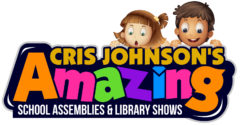
“Think left and think right and think low and think high.
Oh, the thinks you can think up if only you try!”
―
The Power of Rhymes
Picture this: you’re driving to work and listening to the radio when a song from five years comes on the air. You still know all the lyrics and sing along like it’s brand new. Two hours later, a fellow teacher asks what the morning announcements were and you only remember the first two.
Now, why can you remember lyrics you haven’t heard in ages but not something you heard that very morning? It’s all in the rhyme!
Improve Your Ability To Recall Information With Memory Tricks
There’s a reason that authors like Dr. Seuss choose to rhyme their words, and it’s not just because it sounds good. Our brains remember rhymes better because these words are easily linked together by sound! This technique is also known as “acoustic encoding.” Rhymes:
• Teach children how language works by pairing words that sound alike. Children learn to notice and use the sounds within these words.
• Teach children verbal skills like repetition, rhythm, and melody. When children recite rhymes, it also helps them learn annunciation.
• Help to develop literacy and promote language development, both verbal and written.
When it comes to teaching and studying, take advantage of rhyming and other mnemonic devices to help your students memorize new material!
What Are “Mnemonics Devices?”
Mnemonics devices are tricks used to improve and aid with memorization, such as:
• Method of Loci: Visualize a mental image to associate what needs to be remembered. The more vivid the image, the more effective your recall. For example, for those who travel often and need to pack, you make a list of items you’ll need. To ensure you forget nothing, mentally walk through your morning routine. You hop in the shower (shampoo, soap, razor, washcloth, towel), and then brush your teeth (toothbrush, toothpaste), and so on.
• Acronym: Use the first letter of the words to create a phrase. For example, to memorize the order of planets in our solar system, we teach “My Very Excellent Mother Just Served Us Nine Pizzas” to learn “Mercury Venus Earth Mars Jupiter Saturn Uranus Neptune Pluto.”
• Chunking: breaking down large amounts of information into smaller, more manageable pieces. For example, your bank account is 10-12 digits. Rather than memorize it in one long numerical string, it’s easier to break it into sets of two digits: 2257234222 becomes 22 57 23 42 22.
• Rhyme: Making up short rhymes to memorize important names, dates, and places. For example, in History we teach “In 1492, Columbus sailed the ocean blue” or for teaching children how to recognize poison ivy, people will use the phrase “leaves of three, leave it be.”
“A Cat And A Hat”
Create rhymes to help you and your students recall important names, places, and dates. Have fun and make it silly!
Take rhyming to the next level when you bring my “A Cat And A Hat” elementary-level school assembly program to your school. This Seussical reading assembly is centered around the wacky characters and plots of many Dr. Seuss books. Your students will laugh, clap, and cheer, and learn key points like You ARE an important person just the way you are and about the gift of diversity. Click here to learn more.


